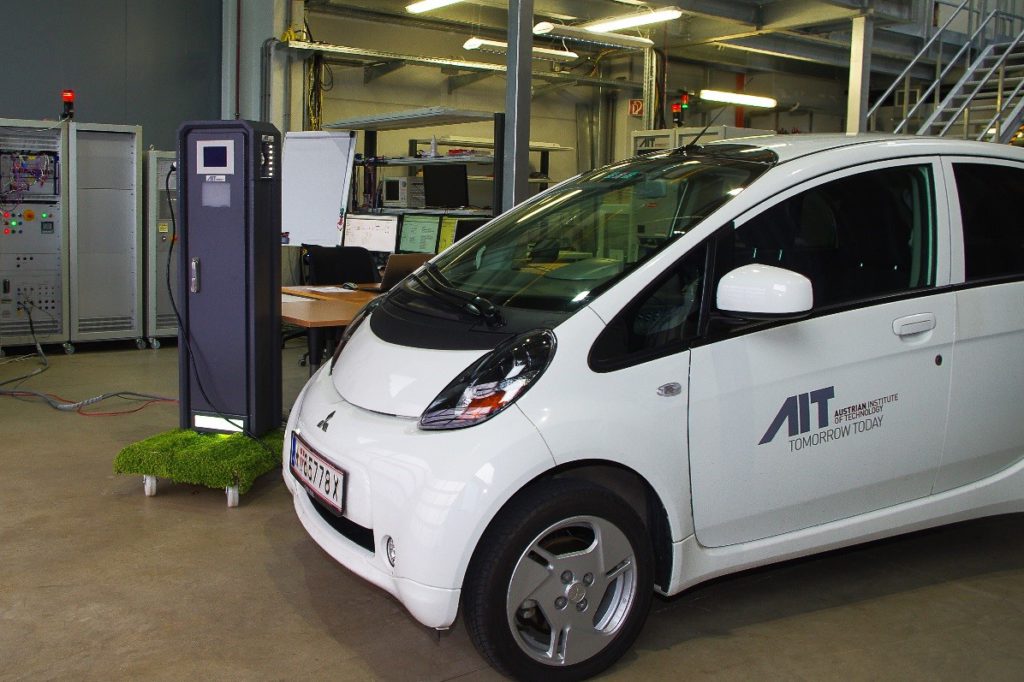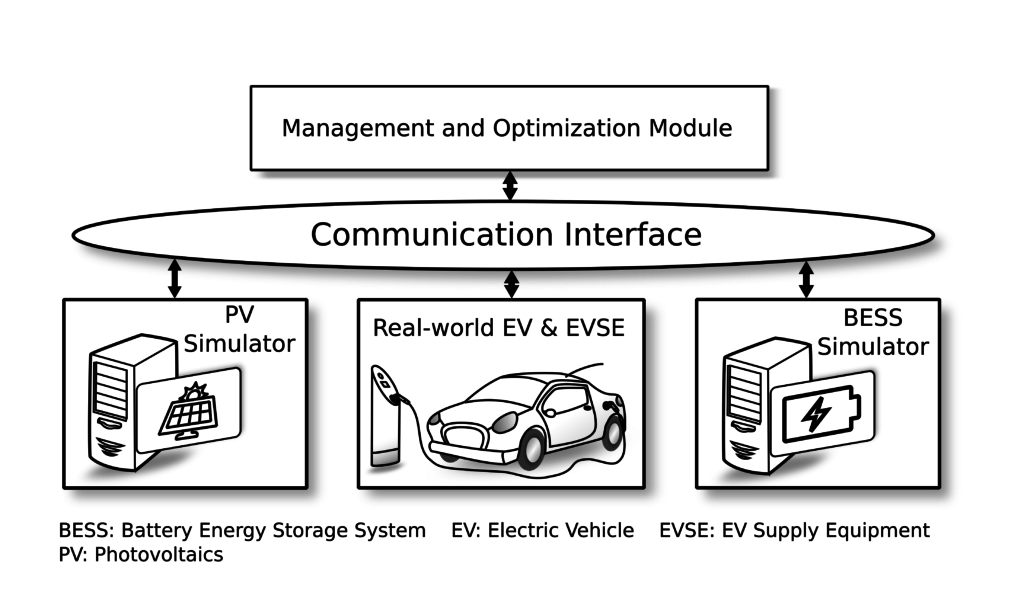Another driver for the application of home energy management systems (HEMS) are batteries and electric vehicles, which are also becoming more affordable and widespread. A simple use case for an energy management system which combines PV energy generation with a residential battery energy storage system and an electric vehicle, would be to store the electric energy produced locally by using the battery during the day. In the evening, when no solar photovoltaic electrical energy output is available, the energy accumulated during the day could be used to charge the electric vehicle. In doing so, the self-consumption of PV energy would increase while the average power consumption from the grid would diminish. Therefore, HEMS would pave the way for the optimization of energy consumption by shifting the charging activities of the electric vehicle (EV) to non-peak hours.

Figure 1: Energy Management Testing in the AIT Lab
In order to test different approaches for management systems and their optimization strategies, the Austrian Institute of Technology (AIT) created a corresponding testing environment. The developed evaluation suite combines State-of-the-Art simulations with real live components such as an electric vehicle in the AIT Lab environment. This provides the advantages of a simulated environment with testing actual hardware that will be installed in a future prosumer household. The system developed at AIT can provide conclusive data on different approaches to home energy management. What components should be managed? How much of a difference does the management of a dishwasher or a washing machine actually make? All these questions can be answered with tests carried out by the developed architecture.
A schematic overview of the developed environment can be seen in Figure 2. Since the architecture is agent based, it provides a simple way for evaluating different system compositions and different management scenarios. Including another device in the management process is as simple as configuring it with the uniform communication interface provided in the AIT lab environment.

Figure 2: Schematic Architecture of the Testing Environment


